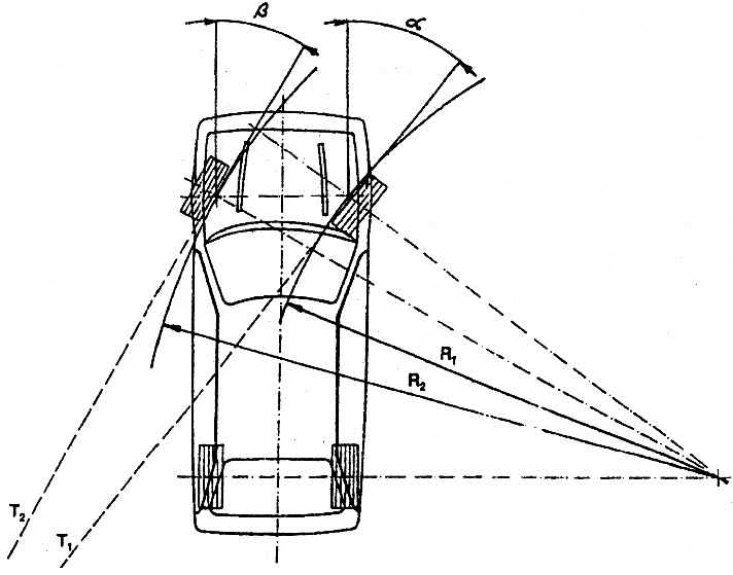Control angles of rotation

The design solution of the front axle and steering provides an opportunity to achieve an optimal compromise of all factors that affect the running-in of the wheels on the road surface when driving straight and in the entire range of the wheel angle. If the recommended geometrical values are not maintained, the wheels partially slip during running-in - they are peeled off on the road surface. The result is excessive and rapid tire wear. Some wheel settings are, of course, tolerance.
A similar situation is observed in the rear axle, with the only difference that the wheels are not able to turn.
A simultaneous condition is the harmony in the installation of the front and rear axles.
Both must be mutually parallel and at the same time perpendicular to the longitudinal axis of the vehicle and this axis must bisect the wheel tracks.
In view of the maximum simplification of maintenance, a very small number of geometric elements can be adjusted.
From the basic geometric dimensions of the front axle (camber, tilt of the steering knuckle to the side, tilt of the kingpin of the steering knuckle back, wheel derailment, limiting steering angle and control steering angle of the steered wheels) adjustment can affect only the wheel alignment and the control angle of rotation of the steered wheels.
At the rear axle, the wheel alignment values are set constructively and none of them is adjustable.
The wheel alignment of the front axle can be influenced by reducing or lengthening the steering rods. Here it is necessary to warn that the correction must be carried out simultaneously by changing the length of both rods, namely each by half the required value. Management must be symmetrical. For information, we add that the relative length of the steering rods is determined by measuring the length of the threaded part between the end of the thread and the ball joint locknut. This size should be the same for both rods.
For practical use, it is important to know that a reduction or lengthening of the rod by 1 mm, carried out by turning one rod through 360°, changes the wheel alignment by about 0°15" each of the wheels.
The symmetry of the steering is necessary so that in the process of turning the wheels from one extreme position to another, the angles of rotation of the steered wheels are preserved.
In any position of turning the wheels by the steering wheel, their installation must be such that the radial planes of the wheels are perpendicular to the straight lines passing through the axles of the wheels and the point of rotation of the car.
Measuring geometry is a very responsible job that requires skilled skill, precision, care and good measuring technique. Therefore, geometry control is recommended to be carried out in the ŠKODA service.
